Weidong Cao
CktGNN: Circuit Graph Neural Network for Electronic Design Automation
Aug 31, 2023Abstract:The electronic design automation of analog circuits has been a longstanding challenge in the integrated circuit field due to the huge design space and complex design trade-offs among circuit specifications. In the past decades, intensive research efforts have mostly been paid to automate the transistor sizing with a given circuit topology. By recognizing the graph nature of circuits, this paper presents a Circuit Graph Neural Network (CktGNN) that simultaneously automates the circuit topology generation and device sizing based on the encoder-dependent optimization subroutines. Particularly, CktGNN encodes circuit graphs using a two-level GNN framework (of nested GNN) where circuits are represented as combinations of subgraphs in a known subgraph basis. In this way, it significantly improves design efficiency by reducing the number of subgraphs to perform message passing. Nonetheless, another critical roadblock to advancing learning-assisted circuit design automation is a lack of public benchmarks to perform canonical assessment and reproducible research. To tackle the challenge, we introduce Open Circuit Benchmark (OCB), an open-sourced dataset that contains $10$K distinct operational amplifiers with carefully-extracted circuit specifications. OCB is also equipped with communicative circuit generation and evaluation capabilities such that it can help to generalize CktGNN to design various analog circuits by producing corresponding datasets. Experiments on OCB show the extraordinary advantages of CktGNN through representation-based optimization frameworks over other recent powerful GNN baselines and human experts' manual designs. Our work paves the way toward a learning-based open-sourced design automation for analog circuits. Our source code is available at \url{https://github.com/zehao-dong/CktGNN}.
Domain Knowledge-Infused Deep Learning for Automated Analog/Radio-Frequency Circuit Parameter Optimization
Apr 27, 2022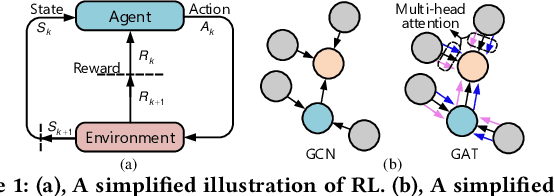
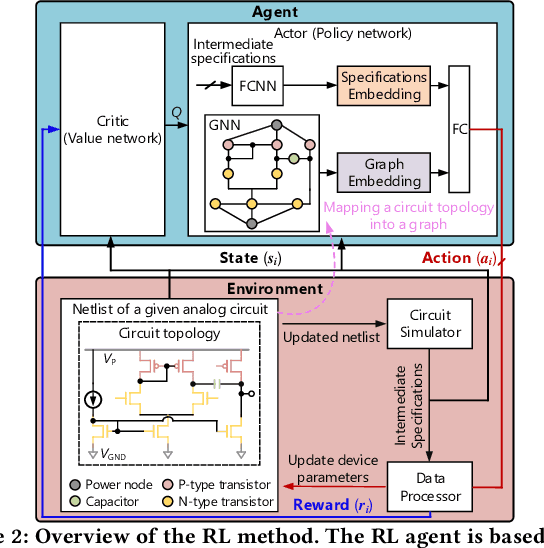
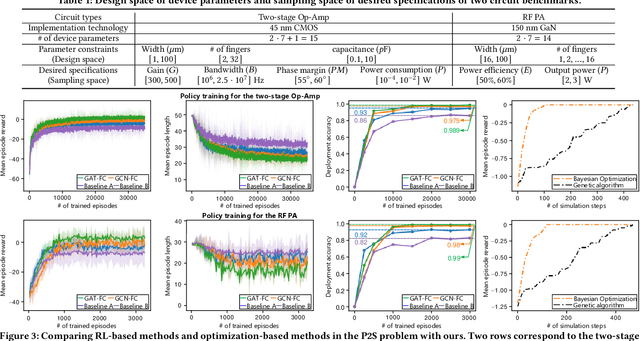
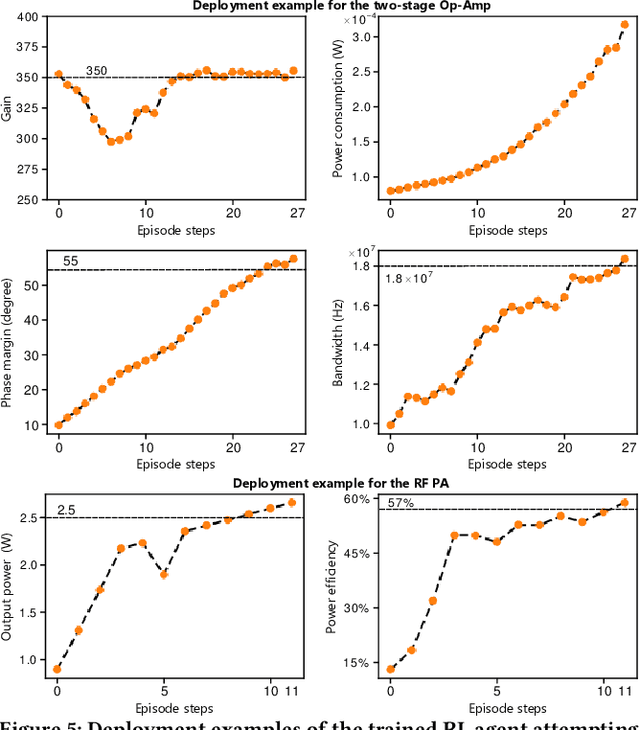
Abstract:The design automation of analog circuits is a longstanding challenge. This paper presents a reinforcement learning method enhanced by graph learning to automate the analog circuit parameter optimization at the pre-layout stage, i.e., finding device parameters to fulfill desired circuit specifications. Unlike all prior methods, our approach is inspired by human experts who rely on domain knowledge of analog circuit design (e.g., circuit topology and couplings between circuit specifications) to tackle the problem. By originally incorporating such key domain knowledge into policy training with a multimodal network, the method best learns the complex relations between circuit parameters and design targets, enabling optimal decisions in the optimization process. Experimental results on exemplary circuits show it achieves human-level design accuracy (99%) 1.5X efficiency of existing best-performing methods. Our method also shows better generalization ability to unseen specifications and optimality in circuit performance optimization. Moreover, it applies to design radio-frequency circuits on emerging semiconductor technologies, breaking the limitations of prior learning methods in designing conventional analog circuits.
Domain Knowledge-Based Automated Analog Circuit Design with Deep Reinforcement Learning
Feb 26, 2022
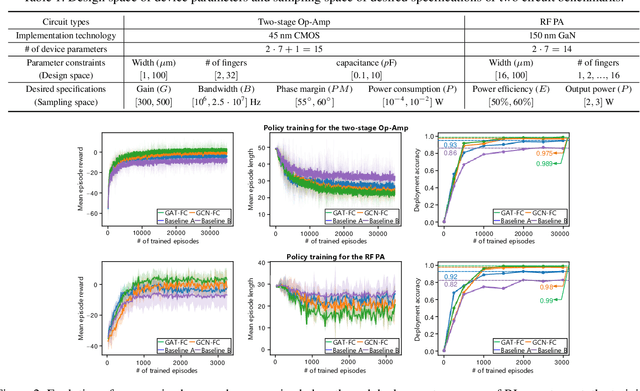

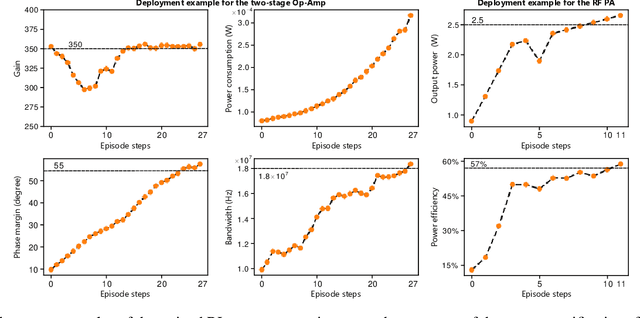
Abstract:The design automation of analog circuits is a longstanding challenge in the integrated circuit field. This paper presents a deep reinforcement learning method to expedite the design of analog circuits at the pre-layout stage, where the goal is to find device parameters to fulfill desired circuit specifications. Our approach is inspired by experienced human designers who rely on domain knowledge of analog circuit design (e.g., circuit topology and couplings between circuit specifications) to tackle the problem. Unlike all prior methods, our method originally incorporates such key domain knowledge into policy learning with a graph-based policy network, thereby best modeling the relations between circuit parameters and design targets. Experimental results on exemplary circuits show it achieves human-level design accuracy (~99%) with 1.5x efficiency of existing best-performing methods. Our method also shows better generalization ability to unseen specifications and optimality in circuit performance optimization. Moreover, it applies to designing diverse analog circuits across different semiconductor technologies, breaking the limitations of prior ad-hoc methods in designing one particular type of analog circuits with conventional semiconductor technology.
Neural-PIM: Efficient Processing-In-Memory with Neural Approximation of Peripherals
Jan 30, 2022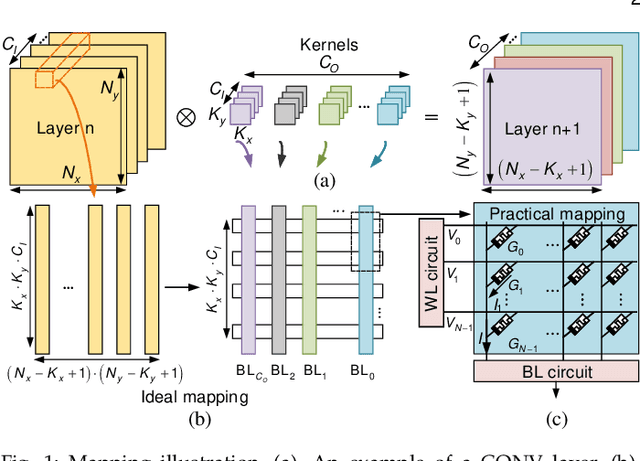
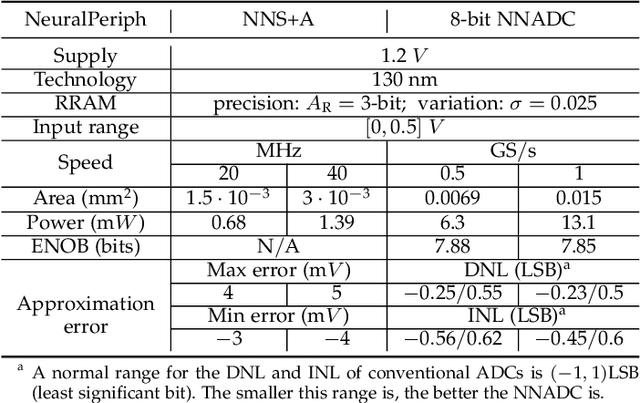
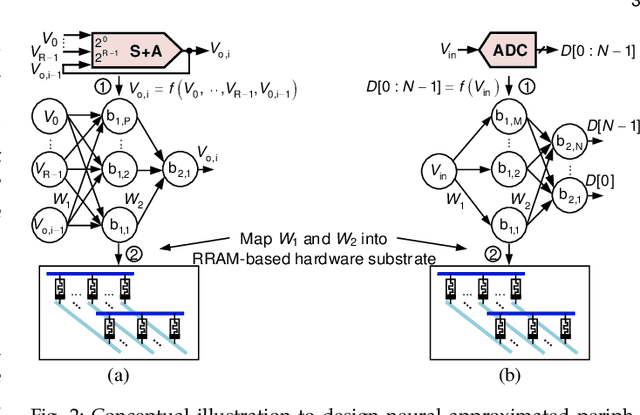
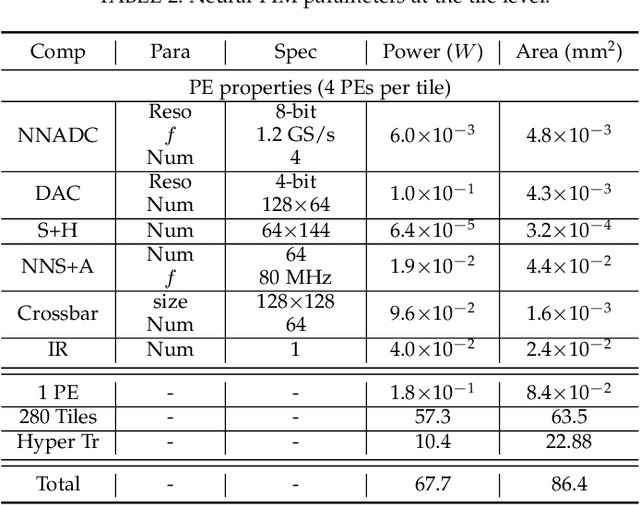
Abstract:Processing-in-memory (PIM) architectures have demonstrated great potential in accelerating numerous deep learning tasks. Particularly, resistive random-access memory (RRAM) devices provide a promising hardware substrate to build PIM accelerators due to their abilities to realize efficient in-situ vector-matrix multiplications (VMMs). However, existing PIM accelerators suffer from frequent and energy-intensive analog-to-digital (A/D) conversions, severely limiting their performance. This paper presents a new PIM architecture to efficiently accelerate deep learning tasks by minimizing the required A/D conversions with analog accumulation and neural approximated peripheral circuits. We first characterize the different dataflows employed by existing PIM accelerators, based on which a new dataflow is proposed to remarkably reduce the required A/D conversions for VMMs by extending shift and add (S+A) operations into the analog domain before the final quantizations. We then leverage a neural approximation method to design both analog accumulation circuits (S+A) and quantization circuits (ADCs) with RRAM crossbar arrays in a highly-efficient manner. Finally, we apply them to build an RRAM-based PIM accelerator (i.e., \textbf{Neural-PIM}) upon the proposed analog dataflow and evaluate its system-level performance. Evaluations on different benchmarks demonstrate that Neural-PIM can improve energy efficiency by 5.36x (1.73x) and speed up throughput by 3.43x (1.59x) without losing accuracy, compared to the state-of-the-art RRAM-based PIM accelerators, i.e., ISAAC (CASCADE).
* 14 pages, 13 figures, Published in IEEE Transactions on Computers
Neural Network-Inspired Analog-to-Digital Conversion to Achieve Super-Resolution with Low-Precision RRAM Devices
Nov 28, 2019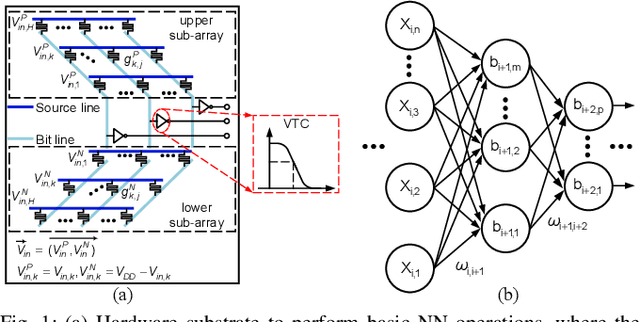
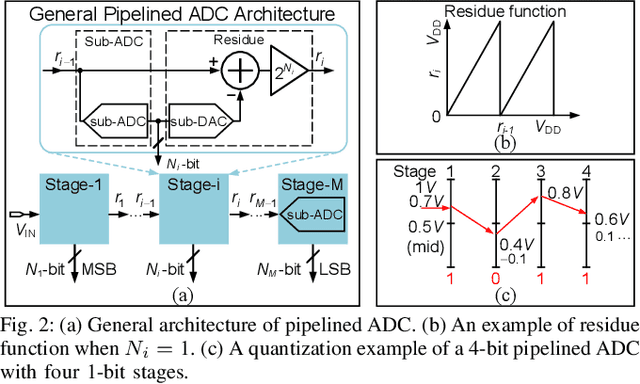
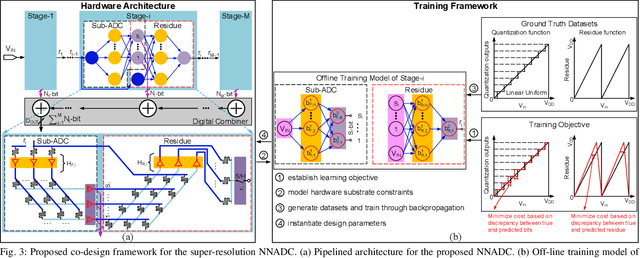
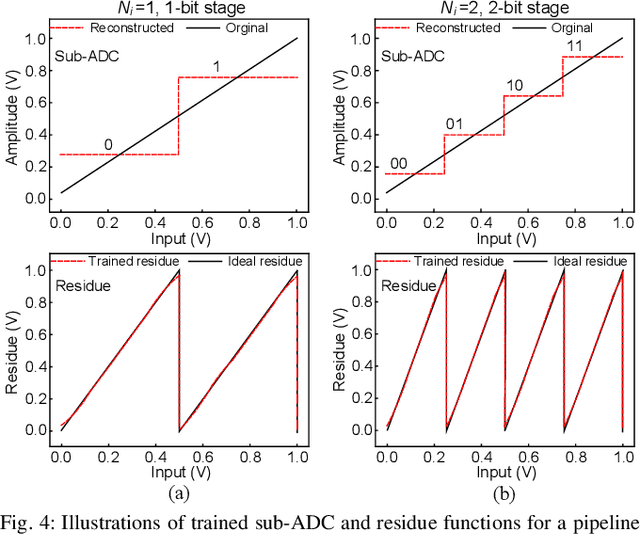
Abstract:Recent works propose neural network- (NN-) inspired analog-to-digital converters (NNADCs) and demonstrate their great potentials in many emerging applications. These NNADCs often rely on resistive random-access memory (RRAM) devices to realize the NN operations and require high-precision RRAM cells (6~12-bit) to achieve a moderate quantization resolution (4~8-bit). Such optimistic assumption of RRAM resolution, however, is not supported by fabrication data of RRAM arrays in large-scale production process. In this paper, we propose an NN-inspired super-resolution ADC based on low-precision RRAM devices by taking the advantage of a co-design methodology that combines a pipelined hardware architecture with a custom NN training framework. Results obtained from SPICE simulations demonstrate that our method leads to robust design of a 14-bit super-resolution ADC using 3-bit RRAM devices with improved power and speed performance and competitive figure-of-merits (FoMs). In addition to the linear uniform quantization, the proposed ADC can also support configurable high-resolution nonlinear quantization with high conversion speed and low conversion energy, enabling future intelligent analog-to-information interfaces for near-sensor analytics and processing.
 Add to Chrome
Add to Chrome Add to Firefox
Add to Firefox Add to Edge
Add to Edge